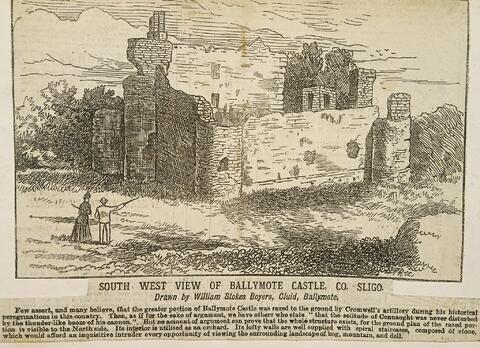referentie code
Titel
Datum(s)
- c.1895 (Vervaardig)
Beschrijvingsniveau
Omvang en medium
1 p.; clipping
Naam van de archiefvormer
archiefbewaarplaats
Geschiedenis van het archief
Directe bron van verwerving of overbrenging
Bereik en inhoud
A clipping of an article on Ballymote Castle in County Sligo. The drawing is by William Stokes Boyers.
Waardering, vernietiging en slectie
Aanvullingen
Ordeningstelsel
Voorwaarden voor raadpleging
Voorwaarden voor reproductie
Taal van het materiaal
Schrift van het materiaal
Taal en schrift aantekeningen
Fysieke eigenschappen en technische eisen
Toegangen
Bestaan en verblifplaats van originelen
Bestaan en verblijfplaats van kopieën
Related units of description
Aantekening
Built in the late twelfth century, the castle is an impressive Anglo-Norman fortification and one of the strongest fortresses of its era constructed in Connacht. It is believed to have been built by Richard de Burgh (c.1259-1326), 2nd Earl of Ulster, a friend of King Edward I (Edward Longshanks) of England, and one of the most powerful Norman lords of the period. As alluded to in the original caption, the castle has had a varied history of attack and destruction, changing hands several times between Gaelic clans and English forces.
It was from Ballymote that Aodh Ruadh Ó Domhnaill (Red Hugh O’Donnell) marched to the disastrous Battle of Kinsale in late 1601. It was subsequently surrendered to the victorious Crown forces under Charles Blount (Lord Mountjoy). In the seventeenth century, the castle was subjected to yet more military assaults and was finally abandoned in the 1690s. Over time, it fell into complete ruin. Ballymote Castle is now a designated national monument and is maintained by the Office of Public Works.

